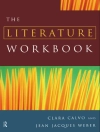This book offers an innovative reassessment of the way Victorians thought and wrote about visual experience. It argues that new visual technologies gave expression to new ways of seeing, using these to uncover the visual discourses that facilitated, informed and shaped the way people conceptualised and articulated visual experience. In doing so, the book reconsiders literary and non-fiction works by well-known authors including George Eliot, Charles Dickens, G.H. Lewes, Max Nordau, Herbert Spencer, and Joseph Conrad, as well as shedding light on less-known works drawn from the periodical press. By revealing the discourses that formed around visual technologies, the book challenges and builds upon existing scholarship to provide a powerful new model by which to understand how the Victorians experienced, conceptualised, and wrote about vision.
Table des matières
1. Introduction: The Technological Imagination.- 2.Simultaneity and Fractal Time: The Panoramic Desire to See All.- 3. ‘Lost in Air’: The Magic Lantern and Visual Experiences of Balloons and Dreams.- 4. The Dissolving View and the Historical Imagination.- 5. Visions of Thought: Mid-century Science and Visual Knowledge.- 6. ‘Hocus Focus’: The Stereoscope and Everyday Imagination.- 7. The Networked World: The Psychopathology of Simultaneity.- 8. The Web of Realities: A Fractal Episteme.- 9.Conclusion.
A propos de l’auteur
Jonathan Potter completed his Ph D at the University of Leicester in 2015 and now lectures and tutors at Coventry University, UK.












